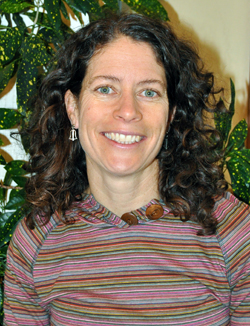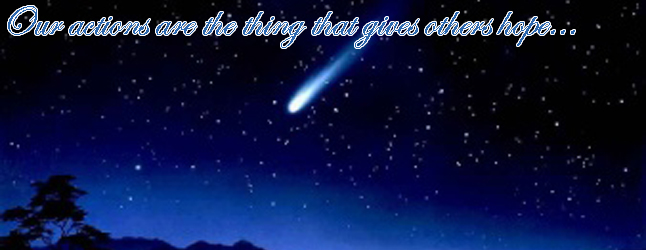
Hope is the state that promotes the desire of positive outcomes related to events and circumstances in one’s life or in the world at large. Despair or futility is often regarded as the opposite of hope. The earliest mention of the hope as a societal force is from the ancient Greek story of Pandora’s Box. Pandora was the first woman that the Greek gods’ created. Later, she was tempted with a test to not open the box, and as the story goes, she couldn’t contain the urge to open the forbidden box that had been given to her. Opening it released all the evils of the world leaving only Hope inside once Pandora was finally able to close the lid again.
This visual is so appealing to me. Hope is often portrayed in this myth as a beautiful Greek woman, lying in the bottom of the jar. And this image is so often true in our own lives. When there really seems to be nothing left, when we are at that veritable bottom of the barrel we could get a hold of just one strand, one sliver of hope, we have something to build on, something to fix our sights on. Then slowly we can rebuild the pieces of our life.
As an environmentalist there is a lot going on these days to make me lose sight of hope and cause me to fall into deep despair. In fact, the global rate of suicides among scientists and environmentalists is well documented and climbing steadily each year.
In this time of climate change, environmental degradation, toxic spills in every corner of this beautiful planet, and government inaction, it is difficult to imagine how I could find much hope at all. But it is so easy. There are politicians, community leaders, and everyday people slowly chipping away at societal problems with their tiny picks and axes, all sharpened with blades of hope.
Then there is the resilience in nature: polar bears that by most accounts will go extinct in my lifetime, have now been reported to be interbreeding with the grizzly bear. Pelicans, who are so beautiful, and are losing their natural prey in Australia, but have picked up the habits of sea gulls and eat garage (and the rare small dog). Larch trees are marching slowly east into our area, just as the future of our cedar forests is in question because of climate change.
Mother Nature herself is the very Baroness of Hope. When I see a spider web sparkling in the dew, torn down and rebuilt with the same elegance each time, when I learn about the complexity of insect construction projects that are as intricate and complex as our cities, when I take the time to see the diversity of mushrooms in our forests- every colour and shape imaginable, when the sun catches the extravagance of the colour patterns on the scales of a salmon from the Columbia River, when I watch the tiny micro-organisms that live in the gut of wood termites- they look like tiny jelly fish, gracefully moving around as they digest wood fibre for the termite, which becomes part of the new soil on the forest floor, or when I learned about a species of cuttlefish that is colour blind yet can blend into it surroundings, even in the darkness of night.. These things are simply so beautiful, so intensely prolific and diverse, that to give up hope for the collective future of this planet seems completely insane.
How about this for inspiring hope? All those questions that roam around our brains, the ones no one can answer. They leave so much room for recovery from the mess we have made of this world. Questions like: if we live in a universe that is ever expanding, then what are we expanding into? And since when? And how did it all start? There is so much that we can’t understand and that realization alone is enough to make me have an intense feeling of hope for our collective future. I also feel a great deal of hope because I know that the greatest minds of our day have created energy from nuclear fusion, put humans on the moon, and perform complex surgeries on babies in utero. If government wanted to, these same great minds could be utilized and would gladly create the solutions needed to make our world sustainable and peaceful.
I also had a sudden recognition when I was in my early twenties that there was no way I even had the right to feel hopeless. It came like a lightening bolt one afternoon when I was working as a nanny in West Africa. I spent four months working for my cousin who in turn was working there for the Canadian International Development Agency doing aid work. When I met people in Benin, Cote d’Ivoire, and Mali, they were working so hard, striving for a better life for themselves, regardless of the myriad of challenges and tragedies. Despite the adverse conditions they existed in, it became clear to me that I had no right to be anything but hopeful! I saw a great deal of suffering, but also joy, family cohesion, optimism, song, culture, tenderness, and obviously hope. So many of our problems are truly first world problems. The friends I met in West Africa would have laughed if I told them that I was feeling despair at a failing mark I had just received, or the fact that I had missed a deadline for entry into a bike race. This trip really taught me how to give my head a shake when negative feelings entered my psyche.
As I left West Africa and returned to Canada, I knew very clearly that I was going back to the best country on earth: to a family, a future, a functional health-care system, plentiful food and clean water. I got it. I truly understood that I should be grateful. And that I should be hopeful. How in heaven’s name could I not be hopeful about my future? My life? I had potential, ability and opportunity, and they were veritably laid out at my feet. Who was I to feel a lack of hope? I saw clearly that it would be insulting to the people that I met who had so much less. Indeed, I learned that it is our responsibility to be hopeful and foster it in others.
Now I live in Revelstoke, the most beautiful, welcoming, safe, and healthy community that I can imagine. There is so much to be hopeful for here, so many people, ideas, and projects that are part of the solution to the problems facing society today.
Then there is the hope that my job as a teacher gives me. Each day I see the resilience of children, in the faces of the many lost causes. So many kids are able to rise above their seemingly hopeless condition to be resilient, happy, and in many cases, successful. What can give more hope than that?
So many of our children today are little environmentalists, they are compassionate, and against all odds, succeeding to make positive change in their own lives. I receive a lot of hope from my students: it is also the little artist who has never seen an adult other than his teacher do art. Yet creates unique and thoughtful pieces during the 45 minutes of art class on Fridays. I feel the hope in the young musician who has never seen an adult play anything, but can keep the beat and falls in love with the instrument he is assigned in grade 7 band class. Hope is also personified in the child who dominates sports day with scuffed skateboard shoes that are hardly tied. Hope springs eternal out of the hearts of our children. Who are we to not join them?
Small changes in our country give me hope. You would not have thought that we would have no smoking anywhere in public, but it is now so. Policy changes like that give me hope about more positive changes in the future. Could you have predicted that schools would make their focus the social-emotional education of our children? We are now including lessons on how to be kind, get along with others, and how to be empathetic. And guess what? The kids love it, they get it, and their desire for hope is being fed.
Small groups of people really are making the changes we need to see. Look around at all that is going on in our community. We are the pioneers of a resilient and hopeful future, despite the crumbling societies around us. Local initiatives like the Soup and a Smile Lunch, hospice care, community garden, women’s shelter, street libraries all around town, to name but a very few.
We must come to realize that everything we do can be seen as futile or hopeless. Our actions are the thing that gives others hope. We are hope itself. How do we spread hope each day? We can think of it like a global bank account that we can all deposit and make withdraws from. The challenge is for us to be the big global investors in order to make the world a better place. It is completely within in our power to be Hope Spreaders.
Please watch the Story of Solutions, nine minutes that should be your Christmas gift to yourself!
http://storyofstuff.org/movies/the-story-of-solutions/
Have a hopeful and happy Christmas.
Sarah Newton is a local environmentalist, educator and active citizen.




